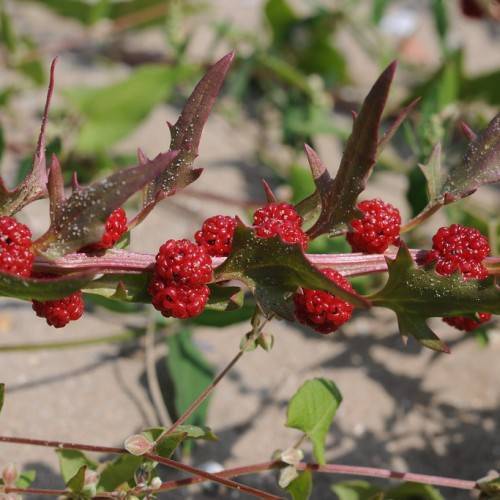
Leafy Goosefoot
Blitum virgatum
Watering:
Frequent
Hardiness Zone:
Flowers:
Flowers
Sun:
full sun,part shade
Fruits:
Fruits Ready In Fall
Edible:
Yes
Leaf:
Yes
Growth Rate:
Low
Salt Tolerant:
Yes
Care Level:
Medium
watering
Strawberry-Blite is an easy to care for plant, however it does require regularly scheduled watering. To maintain optimal health, ensure that the soil is kept consistently moist but not saturated. Water the plant every 1-2 days during the growing season and 1-2 times a week in the winter, or whenever the soil appears dry. If the soil is very sandy, increase watering frequency. Avoid overwatering, as this can damage the plant.
sunlight
Strawberry-Blite, a short-lived perennial, is native to many parts of Europe and North America. This plant species needs sunny conditions for successful growth and flowering. It needs at least 6 to 8 hours of full sunlight per day and thrives in temperatures between 65-85 degrees Fahrenheit. It is drought tolerant and can be grown in either full sun or part shade. The best time for exposure to sunlight is between mid-morning and mid-afternoon. This is when the plant receives the most direct sunlight and is ideal for photosynthesis. It is important to note that direct sunlight should be limited during the hottest part of the day. Warming temperatures can cause wilting and other serious damage to the plant.
pruning
It is best to prune strawberry-blite plants in the summer after the berries have set and ripened. Pruning should be done when the plant is actively growing. This will help promote new growth and help to keep the plants in proper shape. Care should be taken to not over-prune the plant as too much pruning can result in reduced carbohydrate reserves and a weaker plant. Remove flower stems, dead or damaged stems, and any stems that appear to become diseased. Remove older stems to let in new growth. Prune stems at the soil level or just above a healthy bud to reduce the total coverage of the plant and allow airflow which may reduce the chances of fungal infections.
